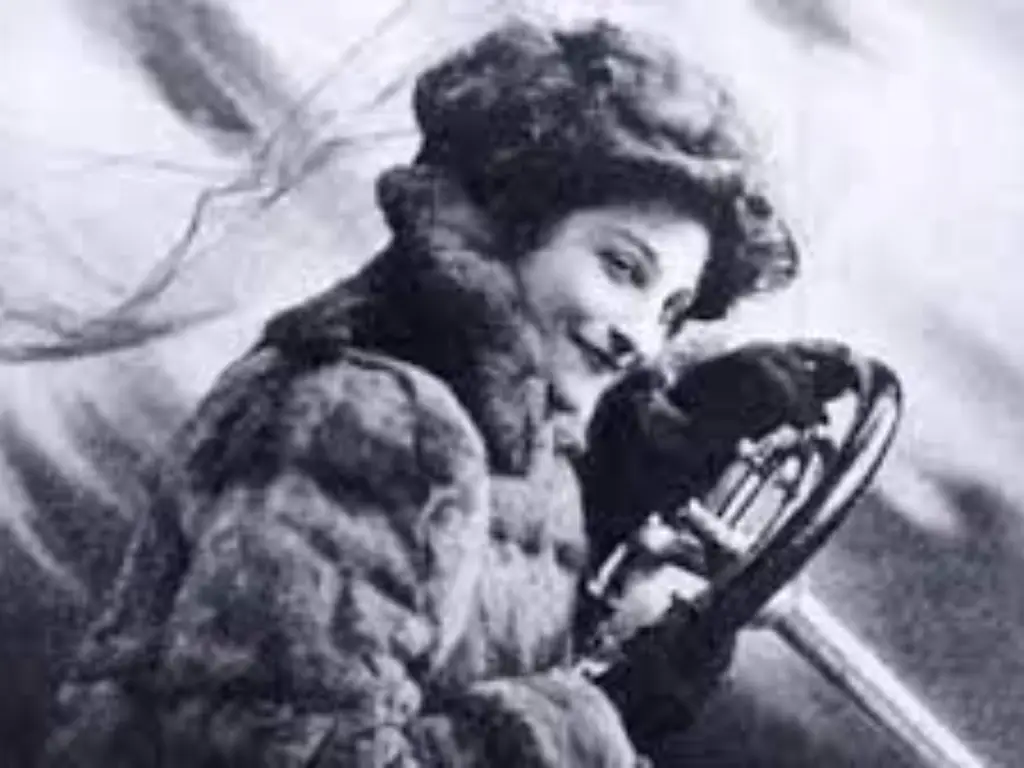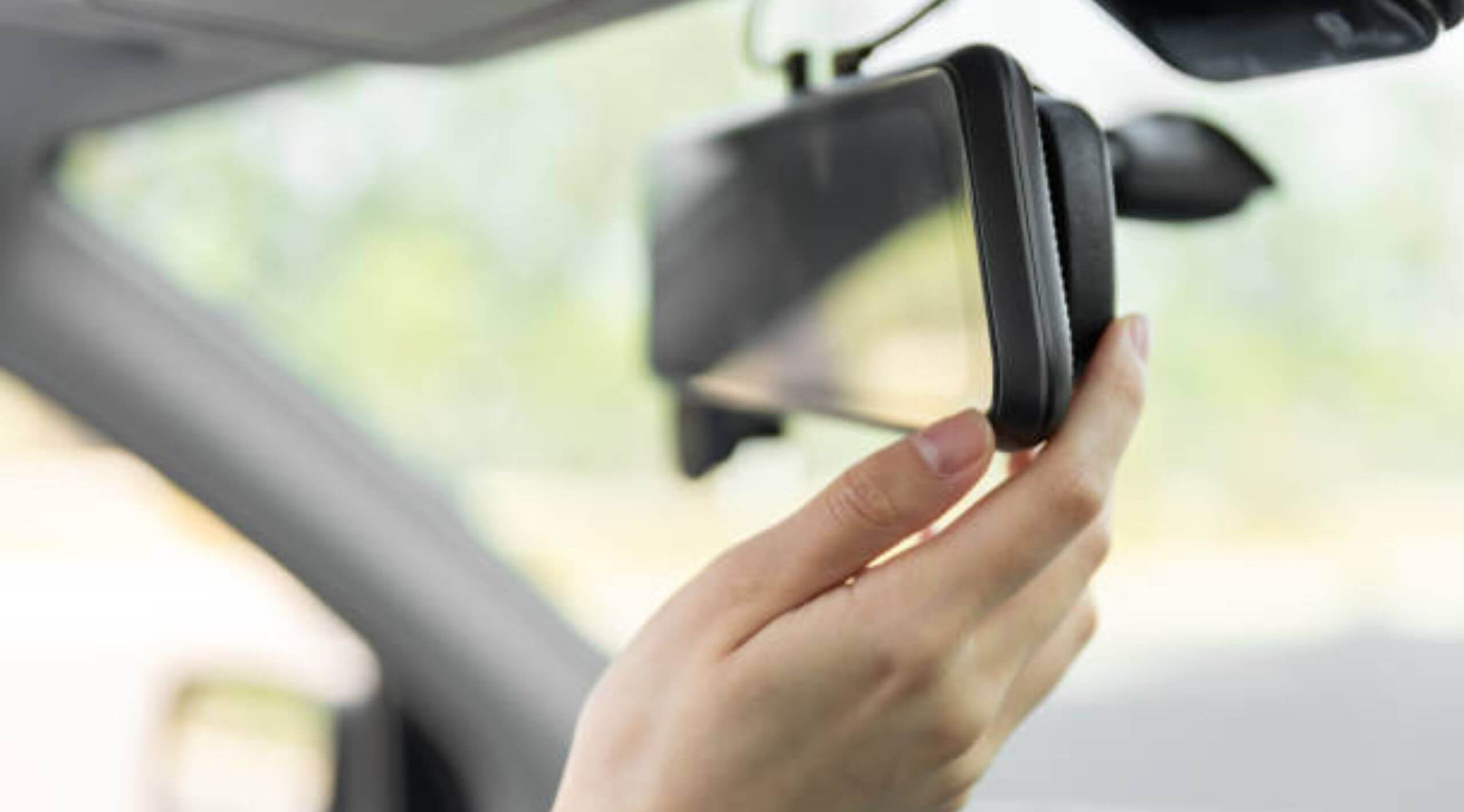The First Glimpse: Early Concepts of Rear View Mirrors
Have you ever contemplated the inception of the rear view mirror and the period when this brilliant notion was first conceived? The narrative originates in the early 1900s, an era distinguished by rapid innovation within the burgeoning automobile industry. Assigning this invention to a solitary individual is challenging, yet numerous embryonic forms of rear view mirrors began to surface. Dorothy Levitt, an esteemed figure in the motoring narrative, referenced a “little mirror” in her informative and engaging handbook for women, heralding an era of enhanced rear visibility for drivers. This primitive version, although not officially recognized as the rear view mirror, marked an important step towards improving drivers’ awareness of their surroundings, akin to the subtle utility of a little flap pocket of the car—small yet significant in its contribution to vehicle safety and functionality.
Dorothy Levitt: The Pioneering Spirit Behind the Mirror
When considering Dorothy Levitt, it’s imperative to recognize her as more than a mere automobile enthusiast. Levitt, a pioneer in the automotive industry, frequently employed a hand-held mirror during her journeys, allowing her to observe vehicles behind her. This innovative personal use of mirrors might not have officially crowned her as the inventor of the rear view mirror, but it certainly laid the foundation for its later development. Her pioneering spirit and practical application of mirrors significantly influenced the evolution of this critical automotive component, much like discovering a novel utility for a modest little drawer in one’s desk. Her legacy is not merely in her motoring achievements but in her contribution to enhancing driver visibility and safety, aspects that are integral to the design and function of all modern vehicles.

Ray Harroun’s Indy 500: Advancing Rear View Technology
The quest to discern the progenitor of the rear view mirror becomes more tangible upon evaluating Ray Harroun’s instrumental contributions. In the inaugural Indianapolis 500, a race now etched in the annals of motorsports, Harroun ingeniously equipped his racecar, the Marmon Wasp, with what is often considered the first widely distributed rearview mirror. This addition marked a significant deviation from traditional racing norms, effectively eliminating the need for a spotter and setting a new safety precedent. The mirror, more than a mere accessory, evolved into a vital component for situational awareness on the racetrack. Harroun’s innovation is not just an interesting story; it’s a watershed moment in automotive history, influencing both race car design and the modern day vehicles we see on the road, ultimately becoming standard equipment in cars across the United States.
Elmer Berger’s Vision: Patenting the Rear View Mirror
Elmer Clinton Adolph Berger’s name is synonymous with the rear view mirror’s genesis. As an American inventor of considerable renown, Berger obtained the first patent for this now ubiquitous device. His “Cop Spotter” wasn’t just a novel invention; it was a revolutionary approach to enhancing driver safety and awareness. By allowing drivers to see what was behind them without turning their heads, Berger’s patented mirror attachment became as critical to driving safety as the top of the windshield is to visibility. His visionary foresight laid the foundation for what would become a universal safety standard in vehicles, a testament to American ingenuity and the relentless pursuit of automotive safety advancements.
How the Rear View Mirror Evolved Over Time
From its humble beginnings envisioned by pioneers like Levitt and Harroun, the rear view mirror has undergone extensive evolution. Initially a luxury, it transformed into an essential safety feature, a testament to the ever-evolving automotive safety standards. The journey from simple reflective glass to high-tech safety equipment is an interesting story of innovation and adaptation. In the 1930s, dash mirrors began incorporating anti-glare features, a response to the increasing demands of driving. The evolution continued with the integration of rearview cameras, a staple in modern European cars and beyond. Today’s rear view mirror is not just a mirror; it’s a multi-functional device that offers a glimpse into the future of automotive technology, reflecting a history of innovation inches at a time. From its position at the top of the windshield to its role in accessories like motorcycles and buggies, the rear view mirror’s journey is a rich tapestry woven through the fabric of automotive history, documented and celebrated in sources like Wikipedia and beyond.
The Role of Rear View Mirrors in Modern Car Safety
In contemporary automotive safety, rear view mirrors are indispensable. Tracing their origins back to the nascent days of the Indianapolis racing scene, these mirrors have evolved to play a pivotal role in modern traffic scenarios. They are instrumental in providing essential visibility, effectively mitigating blind spots, and thereby assisting drivers in maneuvering through intricate driving landscapes. The transformation of rear view mirrors from rudimentary reflective surfaces to advanced safety apparatus is remarkable. Today’s mirrors incorporate cutting-edge technologies, such as sensors and cameras, becoming as crucial to vehicle operation as the dashboard itself. This evolution reflects a significant advancement in automotive design, emphasizing the importance of rearward visibility in ensuring safe driving practices.

Innovative Features of Today’s Rear View Mirrors
The technological advancement of rear view mirrors continues unabated in the contemporary automotive landscape. Today’s rear view mirrors boast a plethora of sophisticated features, exemplifying the zenith of vehicular innovation. These include automatic dimming capabilities to attenuate glare, seamlessly integrated displays that provide real-time feeds from rearview cameras, and intelligent systems equipped with sensors to alert drivers to potential hazards lurking in their blind spots. These groundbreaking developments have not only elevated the safety parameters of driving but also significantly enhanced the convenience and overall driving experience. The amalgamation of these features in modern rear view mirrors represents a remarkable leap forward in automotive technology, underscoring their critical role in augmenting vehicular safety and driver awareness.
The Future of Rear View Mirrors: What’s Next?
As we contemplate the trajectory of rear view mirrors, one wonders about the impending innovations in this field, especially in the context of burgeoning autonomous vehicle technologies and advanced driver-assistance systems. The traditional rear view mirror may undergo radical metamorphosis or perhaps become a vestige of the past. Anticipated future designs are poised to incorporate a greater array of digital features, such as augmented reality displays, which promise to furnish a more expansive and interactive panoramic view surrounding the vehicle. This potential shift heralds a transformative phase in automotive design, intertwining cutting-edge technology with safety and functionality, thereby redefining the conventional role of rear view mirrors in the automotive industry.
Conclusion
So, who invented rear view mirror? It’s a story of many contributors – from Dorothy Levitt’s initial concept to Ray Harroun’s practical application in racing, and finally, Elmer Berger’s patent. This journey from a rudimentary idea to a pivotal safety feature in modern vehicles showcases the power of innovation and adaptation in automotive history. As we look to the future, the rear view mirror continues to evolve, promising even greater safety and convenience for drivers around the world.

